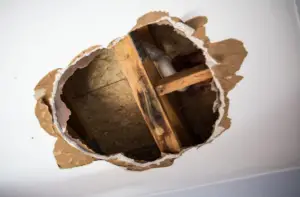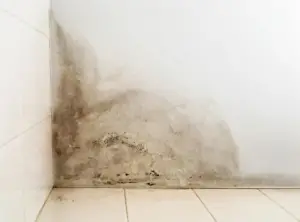 Drywall is one of the most important materials in your home. Not only is it the structural component of most of your walls and ceilings, it’s also a big contributor to the aesthetics of your home. Drywall that is stained, dented, dinged, cracked or peeling not only makes your home look neglected, it can also be indicative of a bigger problem within the structure itself.
Drywall is one of the most important materials in your home. Not only is it the structural component of most of your walls and ceilings, it’s also a big contributor to the aesthetics of your home. Drywall that is stained, dented, dinged, cracked or peeling not only makes your home look neglected, it can also be indicative of a bigger problem within the structure itself.
Although some drywall damage, especially cracking, is hard to avoid when it comes from foundation settling, you can avoid some of the most common causes of drywall damage and keep your walls looking clean and smooth for many years. Staying on top of regular maintenance and taking the right precautions will ultimately save time and money.
General Wear and Tear
Life happens. Over time, it’s inevitable that walls will get scuffed and dinged from everyday activities and accidents (mom did always tell you not to play ball in the house!). The best way to avoid this, of course, is to take care to not hit and scuff the walls. Everything from large pieces of furniture to regular vacuuming can cause marks, so be careful. In fact, your furniture can even cause the corner beads in the drywall to become dented. A corner bead is an L-shaped metal strip that helps hold corners together; usually, you won’t even know it’s there until it becomes dented. Corner beads can be replaced by Atlanta drywall repair professionals, but it’s better to avoid damaging them in the first place. Keep furniture a few inches away from the wall, use care when moving items or cleaning, and try not to touch the walls any more than necessary to avoid damage.
Holes
Holes in drywall can be anything from tiny pinholes from hanging things up to larger holes from that time you accidentally tripped over the dog and crashed into the wall. While drywall is fairly durable, it is also susceptible to damage; for example, opening a door too forcefully can make the doorknob hit the wall and cause a hole.
Again, using care will help prevent larger holes, but you can take precautions to avoid the smaller holes as well. Make sure that you have doorstops or protective backing plates behind each door to prevent accidental doorknob damage. When hanging things on the wall, consider using removable adhesive instead of nails to prevent damage. If you must put holes in the wall, be sure to use drywall anchors to ensure that not only is the picture secure but that its weight doesn’t pull on the hanging screw or nail and damage the wall.
Water
 Water is basically drywall’s worst enemy. Even a minor leak can cause significant damage requiring the drywall to be replaced. The sooner you catch the problem and fix it, the less likely that you’ll be facing big repairs.
Water is basically drywall’s worst enemy. Even a minor leak can cause significant damage requiring the drywall to be replaced. The sooner you catch the problem and fix it, the less likely that you’ll be facing big repairs.
Water damage to drywall not only looks unsightly, but when drywall gets wet, it loses its structural integrity and will warp, peel or flake off. Not only that, but wet drywall that isn’t repaired can harbor mold, which can be hazardous to your health. Therefore, if you notice that your drywall feels damp — or if you can clearly see water damage taking place — it’s vital to first find the source of the water and stop it and then repair the drywall. In some cases, wet drywall is just from a minor leak and only needs to be dried and sealed if there isn’t more substantial damage.
To avoid this problem, regularly inspect your plumbing and address leaks right away, and if your walls do get wet, such as from leaving the windows open during a rainstorm, take the time to dry them.
Drywall that is covered with wallpaper or that has been painted can usually be cleaned with a damp cloth, whereas unpainted drywall should only by dry dusted. Clean your walls on a regular basis to check for damage and potential problems, such as popped nails or peeling or bubbling tape. By staying on top of that maintenance, you can prevent larger, more costly projects to repair more serious damage.
